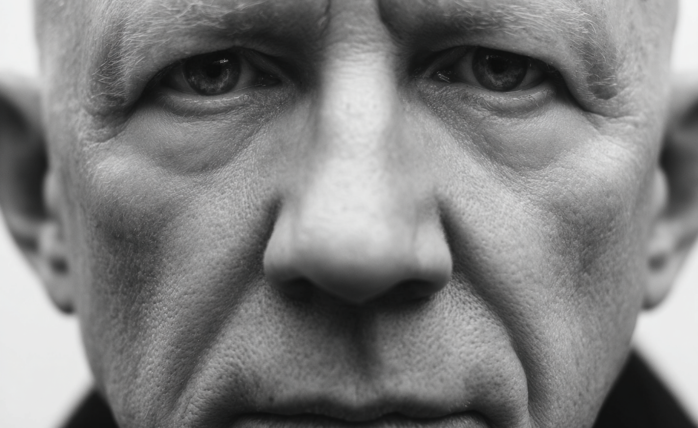Change Your Mindset
50 Quotes From the Best Leadership Books of All Time

How good are you at leading people and teams? For some it may feel like the most natural thing in the world, and for others it takes that little bit longer to master the art of leadership. But there is help at hand and it comes in the form of literature.
Recently, we brought you the top 50 leadership books to help guide you to become the very best leader you can be. However, reading them all wouldn’t leave you much time to….well, lead. That’s why the experts at resume.io bought these books on Amazon’s Kindle, and used the ‘most highlighted’ feature to see which quotes connect with readers the most.
Each of these top-rated books can help steer you in the right direction for whatever you need right now, but this list can also act as a good source of inspiration for whatever future problems may arise. Reading these snippets regularly can help you find your next read for whatever comes your way.
From positive thinking, to helping you understand how to become a better introvert whilst managing a team – let these words of wisdom inspire your next move:
1. Steve Jobs by Walter Isaacson
“Pretend to be completely in control and people will assume that you are.”
2. Freakonomics: A Rogue Economist Explores the Hidden Side of Everything by Steven D. Levitt and Stephen J. Dubner
“There are three basic flavors of incentive: economic, social, and moral.”
3. Outliers: The Story of Success by Malcolm Gladwell
“Practise isn’t the thing you do once you’re good. It’s the thing you do that makes you good.”
4. The Tipping Point: How Little Things Can Make a Big Difference by Malcolm Gladwell
“These three characteristics — one, contagiousness; two, the fact that little causes can have big effects; and three, that change happens not gradually but at one dramatic moment”
5. How to Win Friends and Influence People by Dale Carnegie
6. Quiet: The Power of Introverts in a World That Can’t Stop Talking by Susan Cain
7. The 7 Habits of Highly Effective People: Powerful Lessons in Personal Change by Stephen R. Covey
“It’s not what happens to us, but our response to what happens to us that hurts us.”
8. Who Moved My Cheese? by Spencer Johnson
“The fear you let build up in your mind is worse than the situation that actually exists”
9. Rich Dad, Poor Dad by Robert T. Kiyosaki
“Learn to use your emotions to think, not think with your emotions”
10. The Power of Habit: Why We Do What We Do in Life and Business by Charles Duhigg
“First find a simple and obvious cue. Secondly clearly define the rules”
11. The Art of War by Sun Tzu
“Plan for what is difficult while it is easy, do what is great while it is small. The difficult things in this world must be done while they are easy, the greatest things in the world must be done while they are still small.”
12. Lean In: Women, Work, and the Will to Lead by Sheryl Sandberg
“The most common way people give up power is by thinking they don’t have any”
13. The Prince by Niccolò Machiavelli
“Upon this, one has to remark that men ought either to be well treated or crushed, because they can avenge themselves of lighter injuries, of more serious ones they cannot; therefore the injury that is to be done to a man ought to be of such a kind that one does not stand in fear of revenge.”
14. Elon Musk: Tesla, SpaceX, and the Quest for a Fantastic Future by Ashlee Vance
“One thing that Musk holds in highest regard is resolve, and he respects people who continue on after being told no”
15. The Power of Now: A Guide to Spiritual Enlightenment by Eckhart Tolle
“Realize deeply that the present moment is all you ever have. Make the Now the primary focus of your life.”
16. Think and Grow Rich by Napoleon Hill by Napoleon Hill
17. The 4-Hour Workweek by Timothy Ferriss
“Parkinson’s Law dictates that a task will swell in (perceived) importance and complexity in relation to the time allotted for its completion.”
18. Daring Greatly: How the Courage to Be Vulnerable Transforms the Way We Live, Love, Parent, and Lead by Brené Brown
“Vulnerability is about sharing our feelings and our experiences with people who have earned the right to hear them”
19. Good to Great: Why Some Companies Make the Leap… and Others Don’t by Jim Collins
“Greatness is not a function of circumstance. Greatness, it turns out, is largely a matter of conscious choice”
20. Getting Things Done: The Art of Stress-Free Productivity by David Allen
“Getting things done requires two basic components: defining (1) what “done” means (outcome) and (2) what “doing” looks like (action).”
21. Predictably Irrational: The Hidden Forces That Shape Our Decisions by Dan Ariely
“Most people don’t know what they want unless they see it in context”
22. Start with Why: How Great Leaders Inspire Everyone to Take Action by Simon Sinek
“There are only two ways to influence human behaviour: you can manipulate it or you can inspire it”
23. Mindset: The New Psychology of Success by Carol S. Dweck
“The view you adopt for yourself profoundly affects the way you lead your life”
24. Drive: The Surprising Truth About What Motivates Us by Daniel H. Pink
“Type I behaviour emerges when people have autonomy over the four T’s: their task, their time, their technique, and their team.”
25. Factfulness: Ten Reasons We’re Wrong About the World—and Why Things Are Better Than You Think by Hans Rosling, Ola Rosling, Anna Rosling Rönnlund
“Our most important challenge in developing a fact-based worldview, according to Rosling, is to realize that most of our firsthand experiences are from Level 4; and that our secondhand experiences are filtered through the mass media, which loves nonrepresentative extraordinary events and shuns normality.”
26. Influence: The Psychology of Persuasion by Robert Cialdini
“A well-known principle of human behavior says that when we ask someone to do us a favor we will be more successful if we provide a reason. People simply like to have reasons for what they do.”
27. The Five Dysfunctions of a Team: A Leadership Fable by Patrick Lencioni
“Politics is when people choose their words and actions based on how they want others to react rather than based on what they really think.”
28. Year of Yes: How to Dance It Out, Stand In the Sun and Be Your Own Person by Shonda Rhimes
“Happiness comes from living as you need to, as you want to. As your inner voice tells you to. Happiness comes from being who you actually are instead of who you think you are supposed to be.”
29. Emotional Intelligence: Why It Can Matter More Than IQ by Daniel Goleman
“In a very real way we have two minds, one that thinks one that feels”
30. The One Minute Manager by Kenneth H. Blanchard and Spencer Johnson
“If you can’t tell me what you’d like to be happening’ he said ‘You don’t have a problem yet. You’re just complaining. A problem only exists if there is a difference between what is actually happening and what you would like to be happening”
31. #GIRLBOSS by Sophia Amoruso
“Abandon anything about your life and habits that might be holding you back. Learn to create your own opportunities. Know that there is no finish line. Fortune favours action.”
32. Made to Stick: Why Some Ideas Survive and Others Die by Chip Heath and Dan Heath
“What we mean by “simple” is finding the core of the idea”
33. Creativity, Inc.: Overcoming the Unseen Forces That Stand in the Way of True Inspiration by Amy Wallace and Edwin Catmull
“Getting the team right is the necessary precursor to getting the ideas right”
34. Essentialism: The Disciplined Pursuit of Less by Greg McKeown
“I chose to,””Only a few things really matter,” and “I can do anything but not everything”
35. Emotional Intelligence 2.0 by Jean Greaves and Travis Bradberry
“Self-management is your ability to use your awareness of your emotions to stay flexible and direct your behavior positively.”
36. The Checklist Manifesto: How to Get Things Right by Atul Gawande
“The volume and complexity of what we know has exceeded our individual ability to deliver its benefits correctly, safely, or reliably. Knowledge has both saved us and burdened us.”
37. Crucial Conversations: Tools for Talking When Stakes Are High by Al Switzler, Joseph Grenny, and Ron McMillan
“When it comes to risky, controversial or emotional conversations, skillful people find a way to get all relevant information (from themselves and others ) out into the open.”
38. Getting to Yes: Negotiating Agreement Without Giving In by William Ury, Roger Fisher, and Bruce Patton
“Any method of negotiation may be fairly judged by three criteria: It should produce a wise agreement if agreement is possible. It should be efficient. And it should improve or at least not damage the relationship between the parties.”
39. The Goal: A Process of Ongoing Improvement by Eliyahu M. Goldratt
“Increase throughput whilst simultaneously reducing both inventory and operating expense”
40. Strengths Finder 2.0 by Tom Rath
“You cannot be anything you want to be—but you can be a lot more of who you already are.”
41. The Hard Thing About Hard Things: Building a Business When There Are No Easy Answers by Ben Horowitz
“It turns out that is exactly what product strategy is all about—figuring out the right product is the innovator’s job, not the customer’s job.”
42. Switch: How to Change Things When Change Is Hard by Chip Heath and Dan Heath
“Change is hard because people wear themselves out. And that’s the second surprise about change: what often looks like laziness is exhaustion.”
43. Never Split the Difference: Negotiating As If Your Life Depended On It by Christopher Voss and Tahl Raz
“Research shows that the best way to deal with negativity is to observe it, without reaction and without judgement. Then consciously label each negative feeling and replace it with positive, compassionate, and solution – based thoughts”
44. Built to Last: Successful Habits of Visionary Companies by James C. Collins and Jerry I. Porras
“It means less of your time spent thinking about specific product lines and marketing strategies, and spend more of your time thinking about organisation design”
45. The 21 Irrefutable Laws of Leadership: Follow Them and People Will Follow You by John C. Maxwell
46. Extreme Ownership: How U.S. Navy SEALs Lead and Win by Jocko Willink and Leif Babin
“On any team, in any organization, all responsibility for success and failure rests with the leader. The leader must own everything in his or her world. There is no one else to blame. The leader must acknowledge mistakes and admit failures, take ownership of them, and develop a plan to win.”
47. Tribes: We Need You to Lead Us by Seth Godin
“Leadership on the other hand is about creating change that you believe in”
48. Thomas Jefferson: The Art of Power by Jon Meacham
“Broadly put, philosophers think. Politicians maneuver. Jefferson’s genius was that he was both and could do both, often simultaneously. Such is the art of power.”
49. Dare to Lead: Brave Work. Tough Conversations. Whole Hearts. by Brené Brown
“I define a leader as anyone who takes responsibility for finding potential in people and processes, and who has the courage to develop that potential”
50. Leadership and Self-Deception: Getting Out of the Box by The Arbinger Institute
“No matter what we’re doing on the outside, people respond primarily to how we’re feeling about them on the inside.”
Which quote resonates with you most?
Life
10 Research-Backed Steps to Create Real Change This New Year
This New Year could finally be the one where you break old patterns and create real, lasting change.

Every New Year, we make plans and set goals, but often repeat old patterns. (more…)
Change Your Mindset
The Silent Skill That Makes People Respect You Instantly
What truly earns respect and why most people go about it the wrong way

Everybody craves respect but not everyone earns it. Some people believe that a title, years of experience, or a position of authority automatically entitles them to respect. (more…)
Change Your Mindset
How to Turn Your Mind Into Your Greatest Asset (Instead of Your Enemy)
The thoughts you feed your mind today quietly become the life you live tomorrow.

The human mind has two parts: the conscious mind and the subconscious mind. Both work together, but each has a very distinct role in shaping your life, decisions, habits, and results. (more…)
Did You Know
The Success Patterns You Inherited (And Didn’t Notice)
Your family history may hold the key to why you think, act, and feel the way you do today.

Who are you? Your experiences and your family’s narratives and legacies contribute to your identity. Your ancestry contains individual traits and forces that have been inherited over the years. It also carries the fights and victories of your forebears and older family members. (more…)
-

 Shift Your Mindset4 weeks ago
Shift Your Mindset4 weeks ago11 E’s That Define Every Great Leader And Why Most People Miss Them
-

 Did You Know3 weeks ago
Did You Know3 weeks agoThe Success Patterns You Inherited (And Didn’t Notice)
-

 Entrepreneurs3 weeks ago
Entrepreneurs3 weeks agoThe Essential Skills Every Entrepreneur Needs In 2026
-

 Business4 weeks ago
Business4 weeks agoThe Hidden Money Pit in Your Operations (and How to Use It)
-

 Change Your Mindset2 weeks ago
Change Your Mindset2 weeks agoHow to Turn Your Mind Into Your Greatest Asset (Instead of Your Enemy)
-

 Change Your Mindset2 weeks ago
Change Your Mindset2 weeks agoThe Silent Skill That Makes People Respect You Instantly
-

 Life1 week ago
Life1 week ago10 Research-Backed Steps to Create Real Change This New Year
-

 Tech1 week ago
Tech1 week agoWhat’s in a Name? How to Get Your Domain Right

























